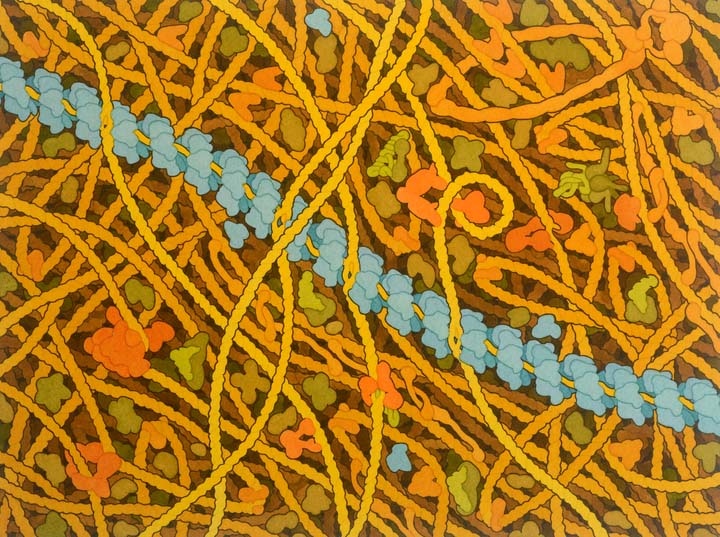POSTS
When you are blindfolded, it is easier to find a rope than a ball!
When a DNA molecule breaks in two, the fate of the cell is threatened. From the perspective of a bacterium, fixing the break quickly is a matter of life and death. But to mend the DNA without introducing mistakes in the sequence is challenging; the repair machinery needs to find a template.

Illustration of the RecA filamnet by David Goodsell.
The process of healing broken DNA using a template from a sister chromosome is known as homologous recombination and is well described in the literature. However, the description usually disregards the daunting task of finding the matching template among all the other genome sequences. The chromosome is a complex structure with several million base pairs of genetic code and it is quite clear that simple diffusion in 3D would not be sufficiently fast by a long shot. But then, how is it done? This has been the mystery of homologous recombination for 50 years. From previous studies, it is clear that the molecule RecA is involved and important in the search process, but, up until now, this has been the limit of our understanding of this process.
We set out to answer this question by studying HR live in bacterial cells. By growing the cells in a microfluidic culture chip and tracking labeled RecA molecules with fluorescence microscopy, we can image the homologous recombination process from start to finish. The microfluidic culture chip allows us to follow the fate of thousands of individual bacteria simultaneously and to control CRISPR-induced DNA breaks in time.
We conclude that the whole repair is finished in 15 minutes, on average, and that the template is located in about nine. We also find that the cell’s initial response to a DNA double-strand break is to rearrange RecA to form thin filaments that span the length of the cell. We can see the formation of a thin, flexible structure that protrudes from the break site just after the DNA damage. Since the DNA ends are incorporated into this fiber, it is sufficient that any part of the filament finds the precious template and thus the search is theoretically reduced from three to two dimensions. Our model suggests that this is the key to fast and successful homology repair.
Read the whole story in Nature.